
The Park's Least Wanted - Invasive Species
Monday, June 8, 2014
By Guest Author- Jane Raffaldi, Education and Outreach - Adirondack Park Invasive Plant Program
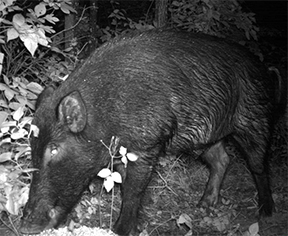
Eurasion Boar (Sus scrofra)
Photo courtesy of APIPP
The introduction and spread of invasive species is one of the greatest threats posed to global biodiversity and is undoubtedly one of the greatest threats posed to our Park’s native ecosystems. Invasive species are non-native species that cause ecological, economic, or societal harm and that rapidly displace native species through competition and suppression.
Invasive species have competitive advantages such as a lack of native predators, high birth and growth rates and a tolerance for a wide range of environmental conditions. As a result of these advantages, invasives are able to thrive and expand their territories while populations of native species are suppressed or eventually out-competed and extirpated.
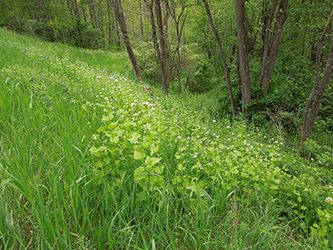
Garlic Mustard (Alliaria petiolata)
Photo courtesy of APIPP
Invasive species come in all shapes and sizes. They can be terrestrial or aquatic, plant, animal, or pathogen, large enough to attack, like Eurasian boar, or visible only with a microscope, like viral hemorrhagic septicemia. Most of the time, people are unaware that they could be aiding in the spread of invasive species.
Garlic mustard is often spread through seeds that stick to the bottom of hikers’ boots. Aquatic invasive species such as Eurasian watermilfoil can hitch a ride from one waterbody to the next attached to a boat or trailer. Invasive insects such as the emerald ash borer can be transported while hiding out deep inside firewood brought from outside the region for camping. As a region built upon recreation and tourism, the Adirondacks have an increased risk of invasion.
Now, the good news! With your help, we can protect the Adirondacks from incoming invasive species. By implementing several easy steps into your recreational activities, the likelihood of introducing an invasive species can be greatly reduced. This year, the theme of New York State’s Invasive Species Awareness Week, which is July 12 through the 18, is Promoting Alternatives to Invasive Plants.
By using non-invasive plants in your gardening and landscaping, the unintentional introduction of invasive ornamentals is prevented. Local nurseries sell many beautiful native flowers and bushes that are good alternatives to commonly planted invasive ornamentals. Click HERE for a list of suggested native species for your gardening needs. Be sure to plant wisely and share what you learn with neighbors and fellow gardeners!
|
An easy and practical way to prevent the spread of aquatic invasive species (AIS) is to practice the clean, drain & dry approach when entering and exiting a waterbody by boat. The overland transport of recreational watercraft is one of the main vectors for spread of AIS. AIS can be transported through a piece of plant material hanging off of your motor or even by a small clump of mud attached to your hull. By doing a self-inspection before entering and after exiting the water, you can stop the majority of aquatic hitchhikers that may be trying to catch a ride. Any visible plant or animal material and mud that is found on the boat or trailer should be cleaned off. Live wells and bilge tanks should also be drained of any standing water before entering a new lake or pond. Lastly, by allowing sufficient drying time between boating trips (at least 5 days), microscopic AIS will dry out and die. Even more effective than the clean, drain & dry approach is to use high-pressure hot water to wash your boat and trailer which detaches and kills AIS. New boat wash and decontamination stations will be positioned across the Adirondack region this summer for boaters to have their watercraft decontaminated before launching. Many public boat launches across the Adirondacks will have stewards to assist you in inspecting your boat for AIS. They can also refer you to the nearest free boat wash and decontamination station. Be sure to practice the clean, drain & dry approach and utilize the available boat wash and decontamination stations to help prevent the spread of AIS!
If you plan on going camping this summer, use local firewood. Burning it where you buy it helps prevent the spread of harmful invasive insect pests such as the emerald ash borer and Asian long-horned beetle, both of which have not yet been documented in the Adirondacks. By preventing the introduction and establishment of forest pests we can avoid disastrous damage to our native Adirondack tree populations. It is currently illegal to transport firewood more than 50 miles from where you purchased it in New York State so please don’t move firewood. There is usually local firewood available for sale within very close proximity to campgrounds across the Adirondacks. Some campgrounds even offer free local firewood to their patrons so it is easy to burn it where you buy it. Invasive species prevention efforts are happening all across the Adirondacks. This summer, the Adirondack Park Invasive Plant Program (APIPP) will once again be hosting a series of free trainings geared towards educating the public on invasive species prevention, identification, and management.
The first training session will be held in the Adirondack Council’s hometown, at the Elizabethtown Social Center on Route 9. Join us Wednesday, June 17 from 10 a.m. to noon to learn how you can identify and manage troublesome invasive plants on your property, including swallow-wort, Japanese knotweed and many more! Please RSVP by June 15 to Zachary Simek, APIPP’s Terrestrial Species Coordinator, by emailing zachary.simek@tnc.org or calling 518-576-2082 ext. 131. Be sure to include your name, email address, town of residence, and phone number when you RSVP. We also welcome walk-ins. For the full list of APIPP’s summer trainings keep an eye on our calendar at adkinvasives.com/calendar. We hope to see you this summer at one of our many events to help prevent the spread of invasive species! For more information on how you can get involved in preventing the spread of invasive species, click HERE to check out the “Get Involved” section on APIPP’s website. |
|||
|
|||

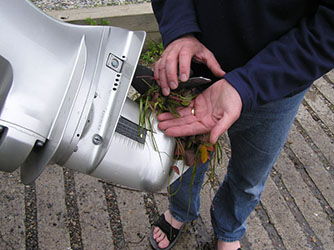
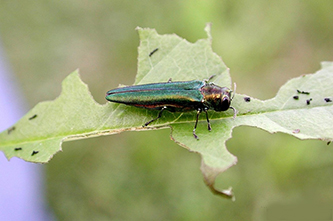
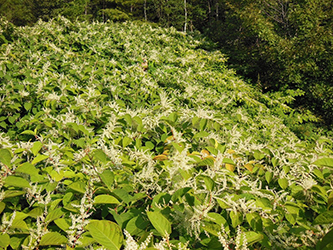
 Jane Raffaldi joined the team at the Adirondack Park Inavasive Plant Program in May as the educator for the summer of 2015. Working with both staff and partners, Jane develops and participates in invasive species public education, outreach projects, and events throughout the region to promote invasive species awareness and management.
Jane Raffaldi joined the team at the Adirondack Park Inavasive Plant Program in May as the educator for the summer of 2015. Working with both staff and partners, Jane develops and participates in invasive species public education, outreach projects, and events throughout the region to promote invasive species awareness and management.


